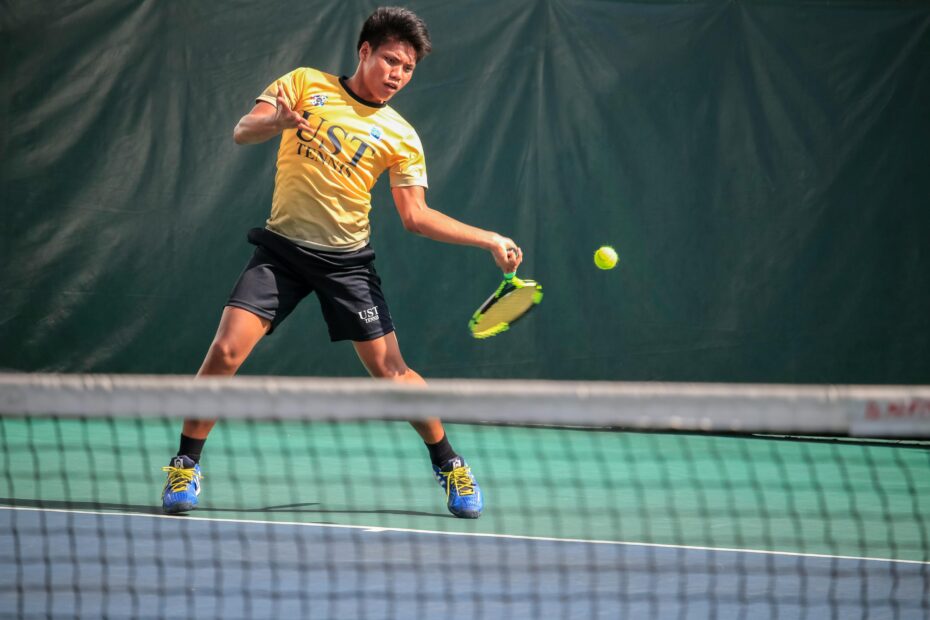Since tennis is played on a specific surface, the surface acts not only as a platform for the players but as one of the key determinants of the game’s rhythm and the results of the competition. Thus, there is the slow high bounce clay court, the fast low bounce grass and the moderate consistent hard court that all offer their unique difficulty and opportunities for the athletes.
The Slot Machine Comparison
Grasping the effect of surface on player performance is like watching yourself play popular slot machines from the comfort of your home, pulling the lever of the machine with varying probabilities for each surface. Clay courts can be advantageous to players who are great at counter-attacking and have high stamina, same as a slot machine that gives a better probability of winning in some specific results. Grass courts are very unpredictable and can be compared to a slot machine with constantly changing odds where a player has to think on his/her feet and take risks. At the same time, hard courts represent a level playing field which is not unlike a slot machine with fixed odds when a player with well-rounded abilities has a chance to win.
Clay Courts
Clay courts are traditionally slow, have high bouncing characteristics and are favorable for players with a more defensive playing style. The surface’s ability to retain moisture reduces the ball speed and increases the bounce, allowing the players to prepare their shots. This tempo is usually quite favorable for the players with good defense as they can return the ball and prolong the point.
Clay courts are one of the most effective in equalizing the chances of players with different styles and playing skills. The game’s tempo is much slower, which means that someone who is not a power player has a better chance of hanging with the big hitters because there is more time to think and build the point. In tennis, for example, clay courts are often referred to as the ‘great equalizer’ and one reason for this is because of this leveling off.
Grass Courts
Grass courts are the fastest of all tennis surfaces because they give a very low bounce and slippery ground which favors the attackers. Grass courts are fast because the grass is short and the ball bounces very low and then players with strong serve and volley games have the upper hand.
Another thing that can be said about grass courts is that they are quite challenging and anything can happen to them. Grass courts also offer different levels of speed and bouncing due to the weather conditions, the state of the court and the kind of grass used in the construction of the court. This again creates some form of chaos in the game and puts the players under pressure to perform under such conditions.
Tennis on grass also emphasizes the players’ mobility since the grass surface is low bouncing and very slippery. In particular, the serve becomes even more devastating on grass, as the quick court and a low bounce will make it difficult for the rival to get back the ball.
Hard Courts
Hard courts are the most often utilized in tennis and are used in different events all over the world. It gives you a moderate speed play along with a uniform bounce that is quite suitable for almost every playing style.
A strength that can also be pointed out about hard courts is that they are extremely versatile. The hard courts can be constructed in some ways as to the speed and the bounce and this is understandable because the management of the tournament may want to have their preferred type of court. Thus, the hard courts are suitable for players with different styles of play because they can change their playing style based on the surface.
Hard-court tennis suits those players who have good groundstrokes and other general qualities of a good tennis player. The that is present in the ball helps the players to make their shots with higher precision and the medium pace of the surface gives a chance for longer rallies and constructing the points.
Adapting Strategies Across Surfaces
Tennis players understand that they need to change their strategy depending on the surface of the court that they are playing on. Therefore, the ability to change requires a human factor not only the technical aspect but also the psychological and the planning factors. The players have to focus on the minutiae of every surface and their playing characteristics if it is necessary to alter one’s strategy when approaching certain points or particular shots. Hence, through identifying the properties of clay, grass, hard courts and other surfaces, the players can improve their standings and win the desired championship on any surface type.
The surfaces of tennis courts are really very different and can range from being easy to play on to being quite challenging for the players. The contrast between the smooth, slippery clay of the court and the spongy, fast green grass courts means that one needs to alter their tactics completely. For this reason, it is crucial to understand the characteristics of surface play in this sport as they define the tactics used by players during a game. Realizing the effect of the surface is vital to enhance the performance of a player and get the best out of him or her irrespective of the surface that is used during the game.






